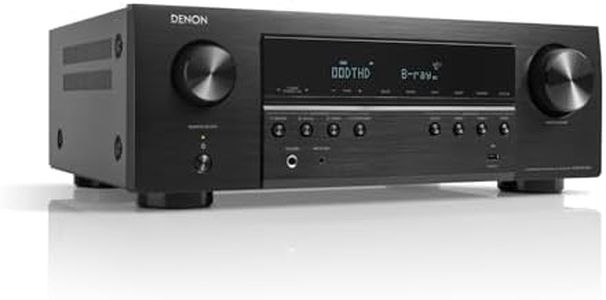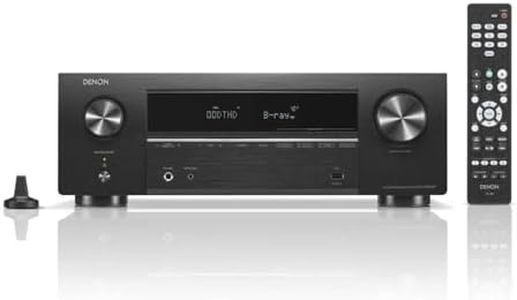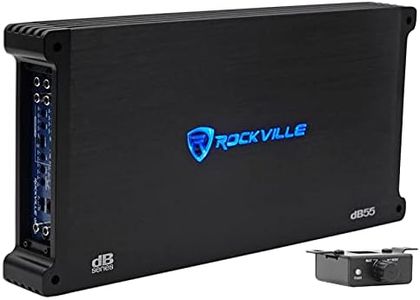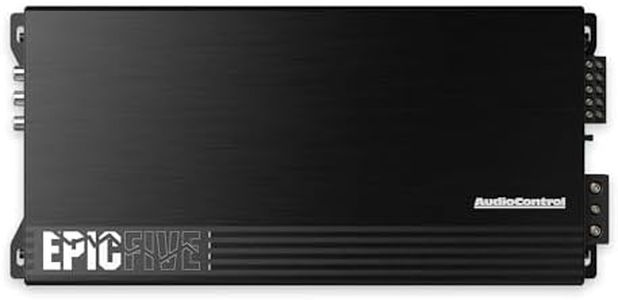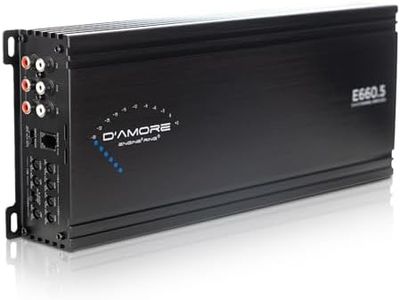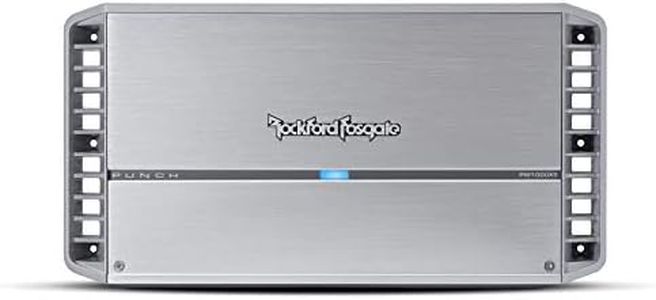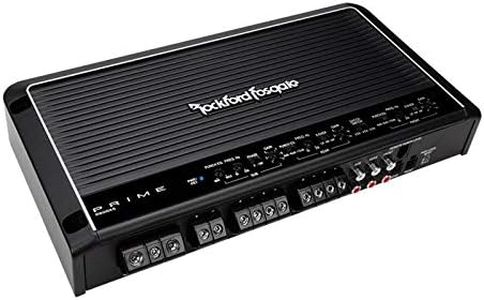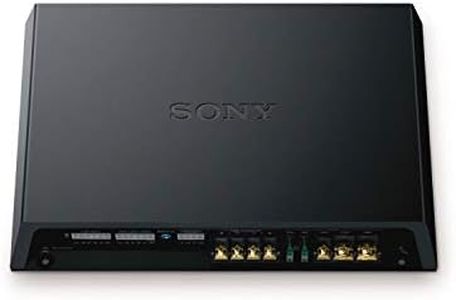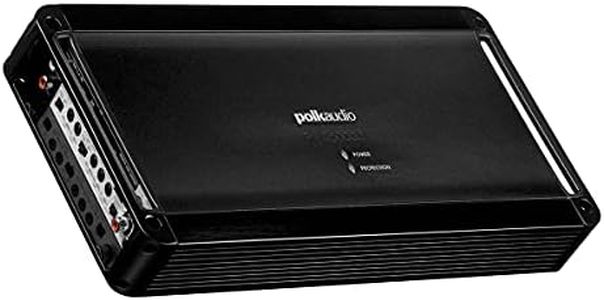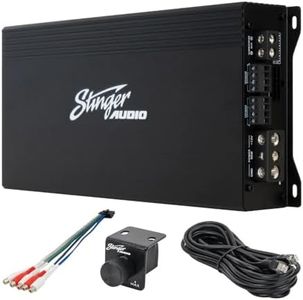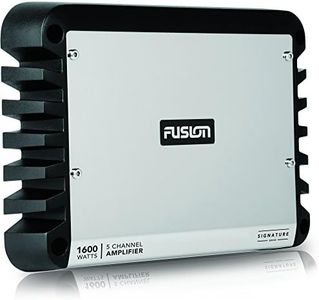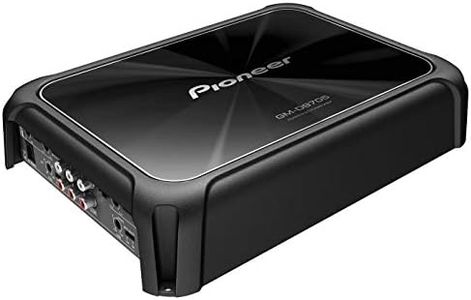We Use CookiesWe use cookies to enhance the security, performance,
functionality and for analytical and promotional activities. By continuing to browse this site you
are agreeing to our privacy policy
10 Best 5 Channel Amp
From leading brands and best sellers available on the web.By clicking on a link to a third party's website, log data is shared with that third party.
Buying Guide for the Best 5 Channel Amp
When choosing a 5-channel amplifier, you’re looking for one device that can power your car’s entire audio system, typically covering four speakers (front and rear) plus a subwoofer. 5-channel amps are a convenient way to keep your setup clean and simplify installation while providing enough power for both clear highs and deep bass. The goal is to match the amp’s abilities to your audio components’ power needs and your listening preferences.Power Output (RMS Watts)Power output, often shown in RMS watts per channel, tells you how much continuous power each channel can send to your speakers and subwoofer. This is important because it affects both the volume and clarity you’ll hear, especially at high volumes. Generally, lower RMS (20-50W per channel) works for factory or basic aftermarket speakers, mid-range (50-100W) supports most upgraded speakers, and higher values (over 100W) are suited for high-performance systems and heavy subwoofers. To pick the right one, check your speaker and subwoofer ratings and choose an amp whose RMS output per channel matches or slightly exceeds those numbers, so you don’t risk damaging your equipment or hearing distortion.
Channel ConfigurationA 5-channel amp means it has five separate outputs: four for regular speakers (front/rear) and one for a subwoofer. Some amps can be bridged or reconfigured for unique setups, like powering more powerful or fewer speakers. If you have a standard setup, this division is perfect, but if you're planning something custom (multiple subs or more speakers), check if the amp supports different wiring configurations. Knowing how you want your system to sound and what speakers/subs you have will help decide if straightforward 5-channel use or bridging flexibility is more important.
Class Type (A/B, D, Hybrid)Amp class refers to how it amplifies electrical signals, affecting efficiency, heat generation, and audio quality. Class A/B amps are known for good sound quality but tend to be larger and run hotter. Class D amps are much more efficient and compact, making them easier to install, especially when space is tight. Some modern amps combine both (hybrid) to balance quality and performance. For most users who want a compact and cool-running setup, Class D is preferred. However, if you’re focused on achieving the warmest sound, especially for the speakers (not just the sub), consider A/B or hybrid designs.
Speaker and Subwoofer Compatibility (Impedance)The impedance rating, measured in ohms, needs to match between your amp and speakers/sub. Most car audio components use 4-ohm, but subs may be wired for 2-ohm. The amp must safely handle the intended load; otherwise, it can overheat or trigger protection modes. Amps usually list their power output at different impedances. Before buying, check what impedance your speakers and subwoofer are, and ensure the amp will provide adequate, stable power at those values.
Crossover and Filter OptionsCrossovers and filters control which sounds go to which speakers, like sending deep bass only to the subwoofer. Good amps let you fine-tune these settings for each channel, improving sound quality and protecting your gear. Some amps offer basic crossovers (high-pass/low-pass) while others are more advanced (variable slopes, band-pass options). If you’re serious about sound tuning or have special audio needs (like component speaker systems), more adjustable crossovers and filters will help you get the best results.
Size and Installation FeaturesThe physical size of the amp, mounting options, and wiring terminals matter because car space is limited. Slimmer, more compact amps fit under seats or behind panels, making installation easier if your vehicle has tight spaces. Heavier, larger amps might need a custom fit in the trunk. Consider where you want to install the amp and choose one that suits the space you have available—measure twice before you purchase.
Signal Inputs and ExpandabilityAmps can accept signals from different sources: traditional RCA cables or, sometimes, high-level (speaker wire) inputs from factory stereos. Some include features to automatically sense when the audio system turns on. If you plan to upgrade your system (like adding more amps or processors), look for models with extra outputs or flexibility for daisy-chaining. Choose the input features that match your stereo and any future plans.
